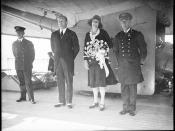Windmills in the Netherlands are recorded to have been used since about 1200. They had varied uses, but the most important was to grind and crush grain. Within 450 years, the Netherlands would enjoy a "Golden Age" of world power, crushing the weaker economies with its strength much as the windmills of the country had been doing for centuries to its wheat. The Netherlands, a small country with just two million inhabitants and virtually no natural resources would defy all odds and pull ahead as a world leader.
In the late 16th century, the northern regions of what is now known today as the Netherlands united to fight against their Catholic Spanish rulers. There was a reformation rippling through the region at this time and the number of people converting to Protestantism was on the rise. This movement was not supported by King Charles I and his successor, Philip II, who was also very distant in his attitude towards the north, never actually visiting the Low Countries himself.
Philip was persistent in enforcing religious persecution of the Protestants and sent a cruel inquisition to enforce Catholicism accompanying a war. The revolt of the Netherlands was led by Prince William of Orange and he adopted the nickname "William the Silent" for keeping a low profile when it came to religious debates. After 80 years of conflict, the Netherlands and its allied provinces got rid of the Spanish in 1648. This allowed the Dutch to acquire a nationality of their own and slowly gather together their strengths in hopes of becoming a world power.
The pieces were coming together nicely for the Netherlands and it would only a matter of time until it was clear the Netherlands had pulled ahead as a powerful country. One of the factors that would lead to...


